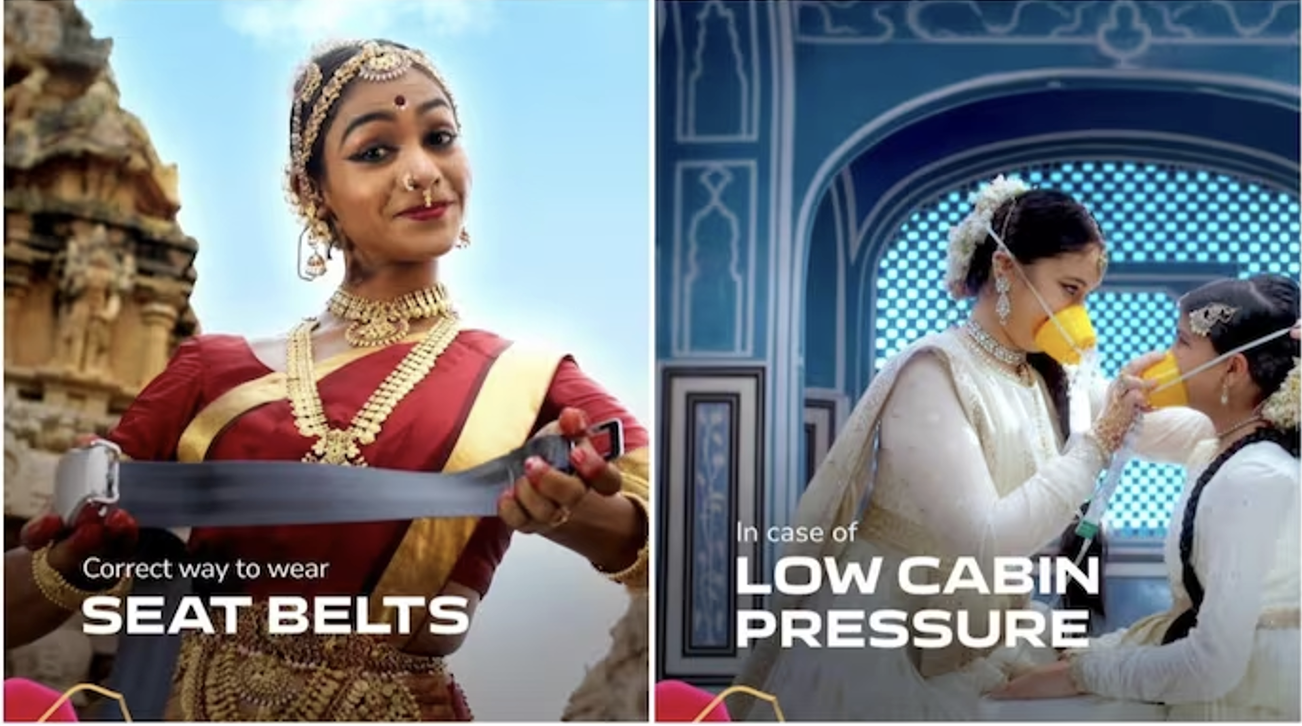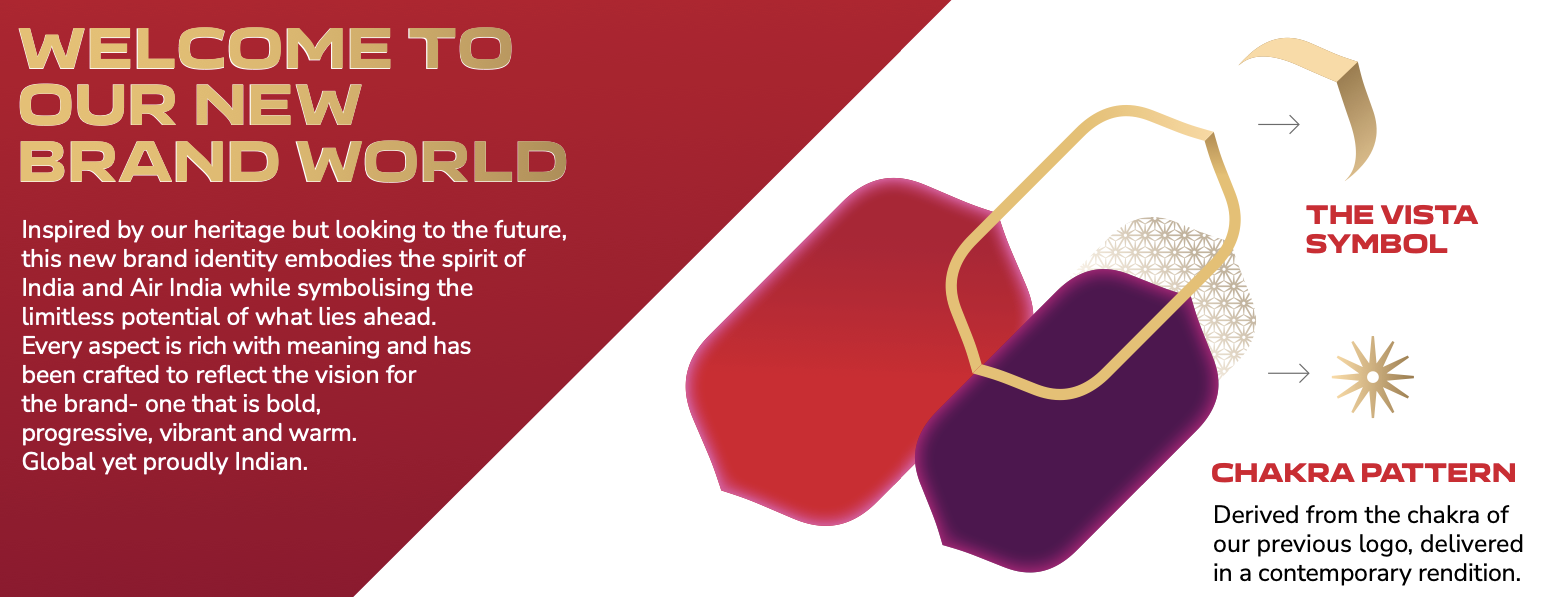Re-launching Air India: the 3 levels of brand-led business
Post by Prasad Narasimhan, Managing Partner for Asia based in Bangalore.
Air India recently launched a safety video that has been hugely loved by Indians, both at home and abroad (1). It leverages the beauty of several classical Indian dance forms to bring alive safety aspects. And the deluge of appreciation suffused with emotional nationalism suggests that Air India has scored a home run. The brand has also launched a new visual identity. “A new symbol, ‘The Vista’, inspired by the peak of an iconic Indian gold window frame, signifies limitless possibilities, progressiveness, and the airline’s bold, confident outlook for the future,” explains the company (2).


A new video and visual identity is a good start. But Air India is an example of a brand that doesn’t just need new communication and a new look to solve its substantial problems. It needs a whole new approach that we call “brand-led business”. In this post, we explore how becoming a brand-led business will require Air India to fly at three different levels of altitude: 1. fix the foundations, 2. brilliant brand basics, 3. unexpected delights.
Level 1: fix the foundations
It’s 13 months since Air India was finally privatized. This was a sweet homecoming for the Tata Group, who took back control of the airline from the Indian government after seven decades – a period marked by inefficiency and lethargy. Air India has a massive debt of $7.5bn, in addition to liabilities of $1.8bn! Even as Air India takes off on the wings of new hopes, the first step is fixing fundamental problems to create a solid foundation for future growth:
- Profitability: Covid and high fuel costs fuelled by the Ukraine war have exacerbated operational losses of airline that hasn’t made profits for over 15 years! Action is needed on the cost control side to get the airline moving on a journey to breakeven
- Aircraft fleet: Tata inherits a fleet of 141 aircraft, but only 118 are in a fly-worthy condition! If recent passenger reports are to be believed, there are still several business-class cabins with TVs that don’t function, chairs that don’t recline etc. – stuff that paying passengers will surely not ignore or forgive.
- Maintenance: Upgrading and maintaining a diverse fleet (narrow & wide body, Airbus & Boeing) is hard. Air India faces a severe shortage of parts and engines for the 787 fleet, leading to serious downtime. And on its Boeing 777 fleet, key to its US operations, many aircraft are either unfit to fly, or getting there soon. A whole new approach to maintenance is needed, including exploring how to simplify the fleet as it is renewed (as per point 2 above)
- Culture: Air India had a notoriously lackadaisical culture, which drove away even its most loyal customers. Older aircraft, old & ungainly cabin staff, callous attitudes, and inferior cabin products make things worse. Change will require significant HR efforts.
Level 2: Brilliant brand basics
These will include a range of must-do areas that, by all reports, Tata has already seized on. These must be executed with a “burning platform” mindset to drive brilliant brand basics into the business, at speed:
- Timeliness: This has never been Air India’s strength. But it is great to hear of an internal note that demands “all endeavours to close doors at D minus 10 mins.” Indigo airlines, their competitor, has long made a virtue of timeliness with the brand property of ‘Indigo Standard Time’.
- Smarten Up: Air India uniforms have always been proudly Indian. The new designs by celebrated designer Manish Malhotra hit the spot but need to be carried with grace and confidence. This will need significant training. Air India recently announced that “cabin crew are important brand ambassadors playing a critical role in image building” (3). Staff will need to take this new attitude to heart, not just be “smartly dressed, adhering to regulations”. Already, it seems that the move to have ‘grooming associates’ to observe & audit them has gone well.
- Service from the heart: Management decreed that passengers will be addressed as “guests”. They also said that the crew supervisor is very important and “will supervise/monitor the entire flight for safety standards and service quality provides to the guests”. While these steps can ensure uniformity of service, frontline staff are the soul of service, and rule-bound service alone will never touch the heart.
- Food: Air India has always served good food, particularly targeting the palate of its core Indian customer. But packaging and presentation have always left much to be desired. While recent passenger videos suggest directional improvement, presentation still needs improving.

Level 3: Unexpected Delights
With brilliant brand basics in place, there is then the opportunity to sprinkle some “brand magic dust” on the service, to really start to make it stand out. For example:
- Indian Hospitality: Indians have always grown up to the idea of “Athithi Devo Bhava” (the guest is like God). This is ingrained in the warmth, respect, and the genuine desire to make them feel comfortable and welcome. Air India needs to find the finest rituals from Indian culture and repurpose them into its service.
- Personalization: Indian hospitality often goes beyond the standard service offered in the West. It involves anticipating guests’ needs and making them feel like individuals, not just customers. Air India can really take this idea to new heights, especially in today’s world of data and connected knowledge.
- Gifts: It’s a common practice in India to offer gifts while visiting friends (you cannot go wrong with a box of sweets). Can Air India recreate this idea in fresh ways?
- Festivities: India is fabled as a land of 3 million Gods. That means we have festivals across the year. How can Air India leverage this excitingly?
Any of the above could be selected to become what we call “service signature”. These are replicable, scalable and talk-worthy service properties that dramatize the brand experience at a moment of truth. These service signatures could be made distinctive by tapping into Indian culture, using for example the traditional “Namaste” welcome, colourful garlands or traditional Indian gifts.
In conclusion, Air India’s relaunch challenge shows how creating a brand-level service business requires fixing the foundations, adding brilliant basics then finally introducing unexpected delights. As a proud Indian, I wish Air India “bon voyage” on what I hope is a journey to greatness!
Sources:


